Reductions in greenhouse gas emissions and increases in carbon sequestration are major challenges facing Australian agriculture. These challenges have to be aligned to the future global demand for food and the potential growth in agricultural output from Australian farms. To ensure Australian farmers and growers achieve key targets focused on sustainable food production, enterprise diversification is an important consideration. Kangaroos are a low-carbon source of red meat. The industry is small compared to the existing red meat sector but there are opportunities to grow the sector as an alternative red meat substitute, and by increasing soil carbon sequestration through reducing total stocking rate, duration and grazing intensity.
The project Market opportunities for methane abatement and carbon storage through improved kangaroo grazing management: Integrating kangaroos into pastoral production systems to assist meet the Paris Agreement emissions target was funded by AgriFutures Australia through its Carbon Initiative. The project aimed to understand whether (i) an identifiable solution could be sought for alternative grazing management through a Kangaroo Grazing System; (ii) there was an opportunity to reduce livestock and use kangaroos as an alternative red meat source to reduce enteric emissions and sequester carbon in soil; and (iii) those novel systems could be a source of carbon offsets.
The report identifies that the livestock sector requires greater sectoral knowledge and new technologies to reduce methane production derived from enteric fermentation, and that modelling suggests an integrated Kangaroo Grazing System could reduce total methane emissions from sector. Furthermore, the modelling identifies that through integrating kangaroos into pastoral sector, increased sequestration of carbon in soil would result. The report also reveals that income lost through diversifying livestock enterprises and reducing livestock herd numbers could be recouped through kangaroo harvesting, carbon credits for soil carbon sequestration, and future biodiversity stewardships payments.
A recommendation is that a strategic review of the future integration of kangaroos through livestock diversification, and their role in future emissions policies, is required as part of a proposed National Kangaroo Strategy. Such a strategy would clarify the population goals of kangaroo management, as well as the role of, and societal expectations for, kangaroos on pastoral properties. To progress the role of kangaroos in livestock diversification, and for future policy development, further research and extension is needed to understand methane abatement and soil carbon sequestration rates.





